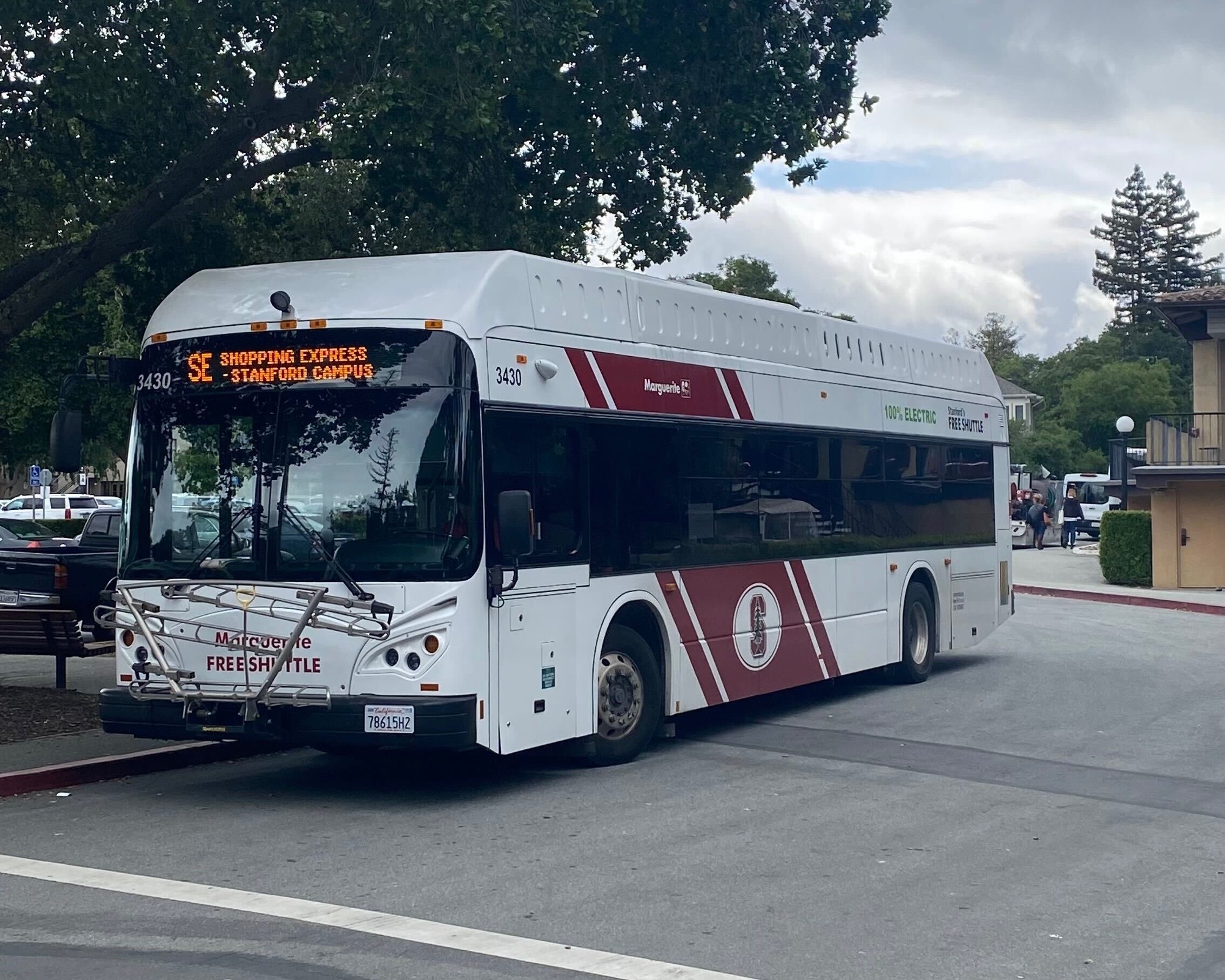After a three-year hiatus, the Marguerite Shopping Express returned to campus Friday, running between the Stanford campus, the San Antonio Shopping Center in Mountain View and the Palo Alto Transit Center.
According to schedules on the Stanford Transportation website, the shuttle is now available to riders hourly every Friday from about 3 p.m. to 11 p.m. in addition to weekends from around 9 a.m. to 8 p.m. The University officially announced the shuttle’s return on March 28, and the finalized schedule and route was posted on April 28.
Elizabeth Park, GSC transportation committee co-chair and third-year chemistry Ph.D. student, wrote in a statement to The Daily referring to the Shopping Express restoration as “a boost to campus life” and expressed excitement that she and her lab colleagues now have a route from the Lorry I. Lokey Laboratory for Chemistry and Biological Sciences to the restaurant Chili’s, jokingly calling it the “Chili’s Express.”
“We’re taking the Chili’s express every Friday for those baby back ribs and sizzling fajitas,” Park wrote.
Beyond bolstering campus life, students have also expressed optimism that the Shopping Express’s return, even temporarily, could be a stepping stone to the return of other now-defunct Marguerite lines.
“It’s almost a foot in the door for expanding the Marguerite,” Nick Harvey ’26 said. “The N and O lines still aren’t back even after a lot of student pressure on the administration. Hopefully, if students ride the Shopping Express, we can use this opportunity to show there’s a real demand for more public transit [and] for more Marguerite lines.”
The restoration of the Shopping Express – currently in the form of a one-year pilot program – follows months of advocacy spearheaded by members of the Graduate Student Council (GSC). The advocacy has broadly addressed concerns of affordability, including calls to increase the graduate student stipend, pushing for transparency on the calculation of minimum salary adjustments and more recently unionization efforts.
According to University spokesperson Stett Holbrook, Stanford will be monitoring how ridership of the pilot restoration compares with pre-pandemic ridership. Holbrook added that, on the possibility of a full restoration of the shuttle, “metrics for assessing the Shopping Express are under review.”
Lawrence Berg, GSC transportation committee co-chair and fourth-year chemistry Ph.D. student, however, shared more pessimistic feelings on the position of the Shopping Express.
“At this point, I would ultimately characterize this win as a concession that the University gave since they chose not to move forward with any other measures from our Bill on Affordability,” Berg wrote.
On the subject of the Shopping Express, the GSC’s Bill on Affordability issued a recommendation titled “Mobility in Post-Pandemic Era: A Large Demand for a Small Offer,” noting that “in 2019, 91,936 riders used the Shopping Express line to access critical groceries and housing supplies, which are either difficult to obtain via bike or additionally expensive by car rental/rideshare.”
The Shopping Express originally shut down in September 2020, reportedly due to a “lack of parking revenue.” The Marguerite’s N and O lines, which offered transportation to the Palo Alto Transit Center during weekends and at night, were shut down at the start of the pandemic in April 2020.
Harvey stressed that students with no prior experience with the Shopping Express or the N and O lines, which the GSC has also advocated to restore, need to be made aware “of the greater access to public transit that there was before.”
“I don’t want students to forget that we had a better Marguerite system and I think a lot of people are forgetting that,” Harvey said.
Beyond just the GSC, other students have advocated for the return of the Shopping Express. Vivian Auduong ’23 has called for the Shopping Express’s return using her Instagram page stanfordnumtots, short for Stanford New Urbanist Memes for Transit-Oriented Teens. The account posted memes to spread awareness of the shuttle in the days prior to its restoration.
“It’s one of those things that’s really funny but also makes you think about the profound impact that public transit and good urban planning can have for people everywhere,” Auduong said. “I would encourage everyone to follow these meme pages, make their own memes and get really excited about transit because it’s a gift.”
